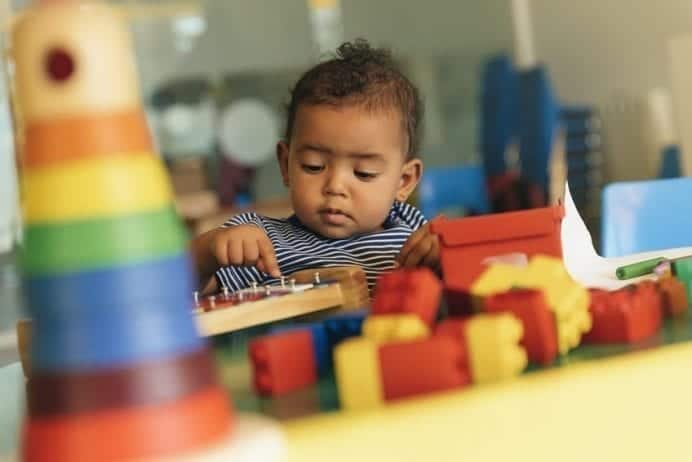
According to British research, the average 10-year-old owns approximately 238 toys (though they play with only 12 on a daily basis). It’s easy to accumulate games, blocks, crafts, and stuffed animals over the years, so it’s likely that even three-year-olds and seven-year-olds have their fair share of playthings. But are some more beneficial than others? According to child psychologists and other medical professionals, the answer is likely yes.
Of course, toys are meant to foster a sense of fun — and even the most basic of dolls can aid in social development. Playing pretend is an important part of childhood that can’t be overlooked. But parents might want to consider the fact that toys aren’t frivolous; they can play an integral role in their child’s physical and mental development.
To promote learning and problem-solving, for example, parents might want to introduce puzzles, LEGOs, books like “I Spy” or “Where’s Waldo,” mazes, board games, blocks, and tic-tac-toe. These toys can stimulate curiosity and cognitive skills. Of course, preprimary programs can help with this, too. The percentage of children aged three to six who were able to recognize all the letters in the alphabet increased by 17% between 1993 and 2012 due in part to the upswing in preschool enrollment, but toys that promote these values can help ready children for what’s to come in the classroom. There are even countless toys that could help to get your child interested in STEM topics (or even a future career, if you want to think that far ahead).
Stimulating your child’s creativity through play is essential, as well. While you can certainly buy boxed toys or gadgets that will do this, it’s often better to think outside the conventional toy box. Experts recommend clay, nontoxic paint, crayons and markers, colored paper, Play-Doh, and other art materials to allow your child’s imagination to run free. Musical instruments, though not conventionally thought of as “toys,” are fantastic for creative stimulation, too. Creating homemade drums or guitars and then playing them can be a whole lot of fun and can allow children to explore new avenues. Of course, playing pots and pans with wooden spoons works just as well.
To help foster the understanding and usage of language, there’s likely nothing better than reading to your child aloud. But it turns out that reading to (and playing with) your child early on can actually help reduce problem behaviors such as hyperactivity, poor focus, and aggression. It seems that this type of parental interaction can help children flourish in almost every way. So you’ll want to keep stocking up on books and making story time a regular part of their routine.
It might seem silly to consider stress relief when choosing your child’s toys, but the reality is that even little ones need to self-soothe in anxious situations. Creating a cozy corner with comforting items (such as fuzzy blankets, stuffed animals, or sensory-friendly toys) can go a long way. And while it might not fall into the traditional toy category, a yoga mat or a soothing playlist can help to recenter and calm a stressed child.
Of course, the needs of each individual child may differ, and it’s up to parents to assess their child’s interests and encourage playtime on a regular basis. Ultimately, no matter what kinds of toys are used most often, playing pretend is a highly beneficial pursuit that can result in all kinds of developmental milestones. And most importantly, parental participation can make all the difference. In many cases, the more frequently you can set aside time to play with your child, the better off they may be.







As a mother of two girls, I’ve always looked for educational toys for my kids. I love the fact that they can enjoy while they learn. It is best for them to enjoy but at the same time learn so when it is time for them to go to school, they will have this mindset that learning is a fun thing to do. Thank you for sharing this. It adds up to my knowledge and I will share this with others as well. Especially to my family and friends who has kids.